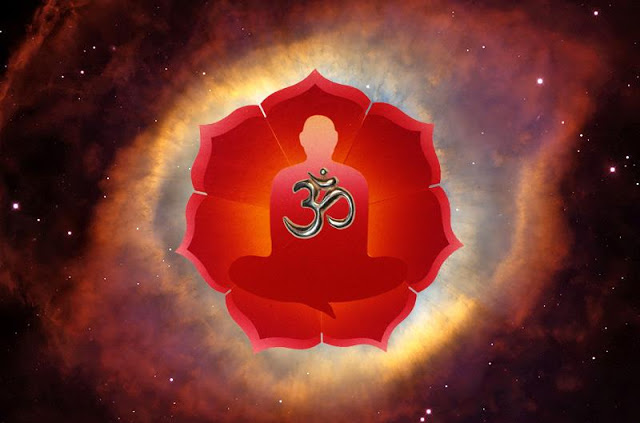No products in the cart.
Gandharva Veda
Gandharva Veda is one of the four main upavedas which are derived from the four Vedas – “Rig Veda”, “Yajur Veda”, “Sama Veda” and “Atharva Veda”. From Sanskrit, gandharva means “skilled singer” or “master of music”; and veda means “knowledge” or “wisdom”.
Upavedas, meaning “applied knowledge”, are specific applications of Vedic teachings. Gandharva veda is the Vedic science of the effect of sound and music on everyone, including the body and soul of the yogi. Ayurveda, which ranks among the Upavedas, uses the Gandharva Veda to promote physical and mental health.
Vedic Period
The term Gandharva is present in Vedic sources (including the Rigveda). According to Oberlies, “in mandalas I, IX, and X, the Gandharva is represented as a celestial being (dwelling near the sun / in the heavenly waters) who watches over the Soma (apparently) for the benefit of the gods and sacrificers.” The Gandharva also “receives the Soma from the ‘Daughter of the Sun.’ , to put it in the Soma power plant (RV 9.113.3), i.e. to bring it into this world.” Gandarva also brings other things from beyond the world, including humans (RV 10.10.4) and horses (RV 1.163.2). As such, the function of the Gandharva is to “accompany things from ‘outside’ into this world, thereby ridding them of their (potentially) dangerous nature”. Later, this figure also began to be associated with fertility and masculinity.
Hinduism
In Hinduism, the Gandharvas (Sanskrit and Hindi: गंधर्व; Marathi: गंदर्व; Assamese: गंद्धर्बब, Gandharbba, Kannada: गंधर्व; Odia: गुमर्ब “Gandharva”; Telugu: गंधर्व; Tamil: गंदर्व, “Kantharvan”; Malayalam: गुर्ब्व “gandharva”) ) are male nature spirits and Apsar spouses. Some are part animal, usually a bird or a horse. They have exceptional musical abilities. They guard Soma and play beautiful music to the gods in their palaces. Gandharvas are often depicted as singers in the court of the gods.
Gandharvas in the historical sense acted as messengers between gods and humans. In Hindu law, a gandharva marriage is consensual and without formal rituals.
The Gandharvas are widely mentioned in the epic Mahabharata as associated with the Devas (as dancers and singers) and with the Yakshas as formidable warriors. They are said to be spread over different territories.
Some prominent Gandharvas include Visvavasu (who was the father of Pramadvara), Chitrangada (who killed Chitrangada, son of Santanu and Satyavati), Chitrasena (with whom the Kauravas and Pandavas fought in the Ghosha-yatra), Drumila (biological father of Kamsa) and Candavega (king Gandharvas who attacked the city of Purañjana).
Buddhism
And Gandharva (Sanskrit; Pali: Gandhabba; Chinese: 乾闼婆; pinyin: Gān tà pó; Japanese: 乾闥婆; rōmaji: Kendatsuba; Korean: 건달바; romaja: Kŏnànà is the lowest of the Vietnamese: Candalba; That – ranks the Devas in Buddhist cosmology. They are among the Cāturmahārājakāyika Devas and are subject to the Great King Dhṛtarāṣṭra, the Guardian of the East. Beings are reborn among the Gandharvas as a result of practicing the most basic form of ethics (Janavasabha Sutta, DN.18). The Gandharvas can fly through the air and are known for their musical skills. They are associated with trees and flowers, and are described as dwelling in the scents of bark, sap, and flowers.They are among the creatures of the wilderness that might disturb a monk meditating in solitude.
The terms gandharva and yakṣa sometimes refer to the same being. Yakṣa in these cases is a more general term, including various lesser deities.
Jainism
In Jainism, Gandharvas are classed among the eight Vyantara Devas. The Tiloyapaṇṇatti provides a list of ten Gandharvas:
- Hāhā
- Huhū
- Nārada
- Tumbara
- Vāsava
- Kadamba
- Mahāsvara
- Gītarati
- Gītarasa
- Vajravān
The Saṃgrahaṇī Sūtra of the Śvetāmbara sect provides a slightly different list:
- Hāhā
- Huhū
- Tumburu
- Nārada
- Ṛṣivādika
- Bhūtavādika
- Kadamba
- Mahākadamba
- Raivata
- Viśvāvasu
- Gītarati
- Gītayaśas
The Digambara sect describes the Gandharvas as having a golden complexion while the Śvetāmbara tradition recognizes them as blackish. The Tumbaru is their sacred tree.






